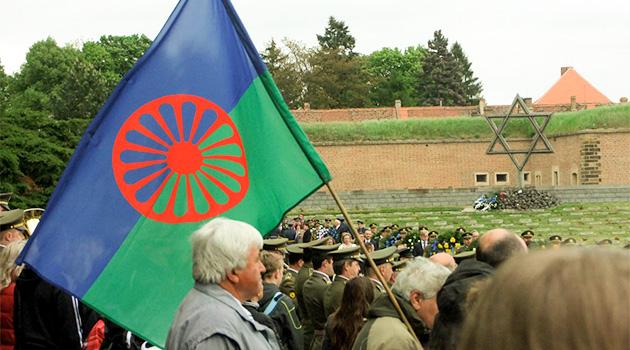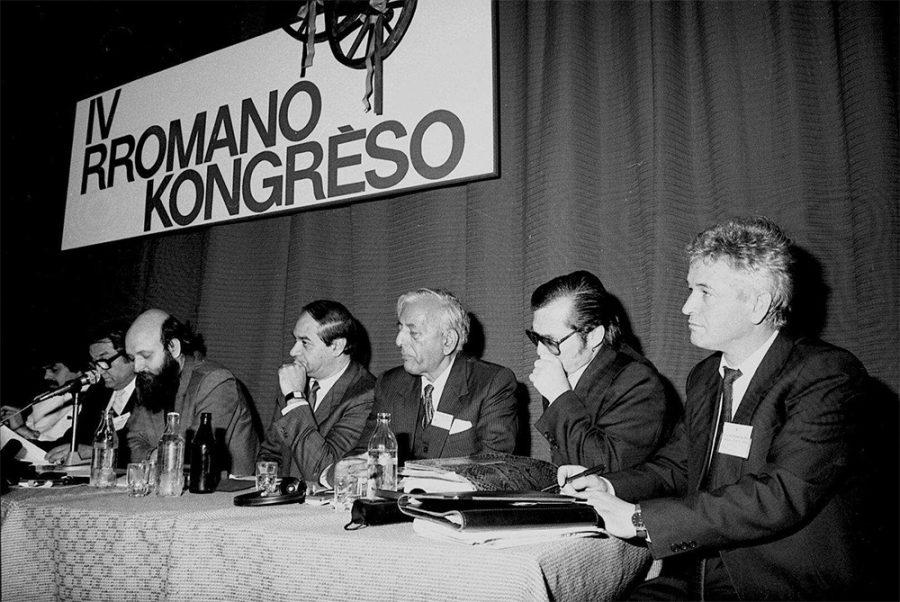8 April, International Romani Day, marks an historic milestone in the history of the Romani nation

On Saturday, 8 April 2023, Romani people worldwide are celebrating International Romani Day. The day commemorates an historic milestone in the history of the Romani nation.
A congress of Romani people from different European countries was held from 7-12 April 1971 in Orpington near London, England. On 8 April 1971, crucial negotiations took place which we celebrate annually today.
The convention established the foundations for international collaboration and the Romani movement acquired an international, political and societal significance. Romani people annually commemorate their common cooperation, culture, language, origin, unity and above all, their Romipen (Romani-ness).
The first congress was chiefly convened thanks to the initiative of Slobodan Berberski, Ján Cibula, Juan de Dios Ramirez Heredia, Grattan Puxon and Vanko Rouda. Interpretation was provided by Donald Kenrick and Mateo Maximoff.
The congress was attended by 23 representatives from 10 different countries (Czechoslovakia, Finland, France, Germany, Great Britain, Hungary, Ireland, Norway, Spain and Yugoslavia) and observers from Belgium, Canada, India and the United States of America. It was attended by four Romani people from Czechoslovakia who were members of the “Union of Gypsies/Roma” (Svaz Cikánů-Romů).
According to a report published in the Romano Ľil newspaper, the Czechoslovak Romani delegates actively participated in the events. They communicated through different dialects of Romanes and through Russian.
Already during that First World Roma Congress, different working groups were formed: one on schools, one on social issues, and a sociolegal group to compensate the Romani victims of Nazism from the Second World War. “Let’s remember that the First Congress was held in the year 1971, when the Holocaust of the Roma had not yet been recognized. Besides that, Romani people in various countries were facing assimilation, their children had no access to education and were significantly more socially disadvantaged in comparison to majority societies in the countries where they lived. The congress wanted to respond to exactly those problems,” Michal Mižigár, who has studied Comparative History at Central European University, previously told news server Romea.cz.
The participants from 10 countries and observers from another four passed a resolution on the form of the Romani flag and the Romani anthem. One of the main outputs of the congress was the rejection of the term “Gypsy”, which had been used to date, and the acceptance of the autonymic term “Roma”.
“Romani delegates from different countries wanted to put a stop to the use of offensive terms for Romani people such as, for example, Cikán (in Czech), Cigán (in other Slavic languages), Gypsy (in English), Gitano (in Spanish) and Zigeuner (in German). These terms date back to the Byzantine Empire between 800 and 1000, when the Athinganoi were a hated group, considered a sect. The Roma reminded the Byzantines of the Athinganoi because like them, they lived on the outskirts of society and dedicated themselves to such worldly affairs as fortune-telling, which in the Christian society of the time was banned as sinful. Another word that became the basis for the terms “Gypsy” and “Gitano” comes from the designation Egyptoi (Egyptian), meaning from the Little Egypt area (in Greece today), which tends to be erroneously interpreted to mean the Egypt of today. Today we see that neither of these terms applies to Romani people at all. Because Romani people were on the outskirts of society they never held a position from which to decide about their own self-determination,” explained Mižigár.
The organizers and participants used the original Romani flag that had been approved in Bucharest at a previous assembly of Romani people in 1933. Originally it was just two fields of blue and green – in the upper field, the blue color represented the sky, while the color green in the lower field stood for the earth.
The red wheel in the center, the Ashoka Chakra, was added by the participants of the 1971 congress to reference the original ancient homeland of the Roma. The addition of the chakra was motivated by the positive relations between diplomats from India and the Roma in Great Britain.

The Romani anthem adopted by the congress is called “Gelem, gelem” and its melody comes from a folk song of Romani people in Romania. The lyrics were written by Žarko Jovanović, a Romani musician from what is today the former Yugoslavia.
It is quite frequently and erroneously reported that the International Romani Union was established at the first congress in 1971. However, the IRU was not created until 1977, when it served the need to smoothly organize the Second World Roma Congress held in 1978 in Geneva, Switzerland.
In 1979 the IRU was granted consultative ECOSOC status by the United Nations. It was exactly during the Geneva congress that the idea was first presented to make 8 April the commemoration day of the First World Roma Congress, and that idea was later approved at the Fourth World Roma Congress in 1990 in Serock, Poland.
Honoring 8 April was not discussed in the Czech Republic until the mid-1990s. The first-ever celebrations of International Romani Day in the Czech Republic were held in 2001 by Athinganoi, an association of Romani university students.

(Left to right: Sait Balić, Marcel Courthiade, Rajko Djurić, Weer Rajendra Rishi, Ian Hancock and Stanislaw Stankiewicz). (PHOTO: Adam Bartosz)